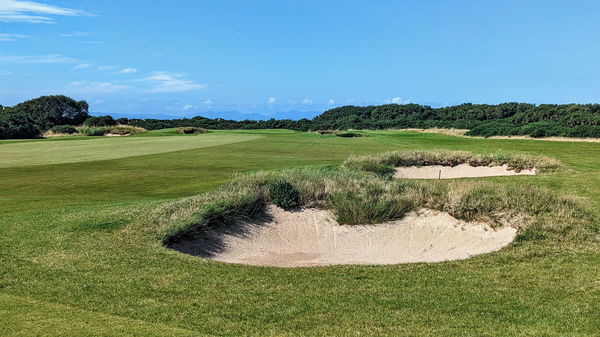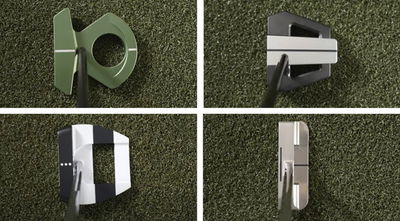Turnberry King Robert the Bruce Course Review
GolfMagic visits Turnberry's second course, the mighty King Robert the Bruce.

Trump Turnberry itself may need no introduction, but for most golfers the words will first conjure up images of the iconic Ailsa course. In modern times, though, the resort has made a second entry into countless rankings with the neighbouring King Robert the Bruce, which has been building a serious reputation since opening in 2017.
Golf has been played at Turnberry since the late nineteenth century, and the first manmade course was designed in 1901, so the King Robert the Bruce is a total newcomer by comparison. Replacing the former Kintyre course, it is the brainchild of Martin Ebert, also the man behind the changes that took the Ailsa to new heights a decade ago.
In fact, the King Robert the Bruce made its debut just one year after the new-look Ailsa was unveiled. It was rechristened in a nod to one of the nation’s greatest heroes; the king was born in Turnberry Castle, the ruins of which still make up part of the resort’s 800-acre estate.
To call the Ailsa a tough act to follow would be an understatement. Still, Ebert’s design is far too good to play second fiddle. At 7,203 yards, the par-72 King Robert the Bruce is the shorter of the two but make no mistake about the challenge it poses from the back tees.

That challenge is evident from the outset. The opening hole is also the longest on the course – up to 618 yards – and a player’s first introduction to the thick rough and gorse bushes that wait to swallow up wayward shots. However, with at least three tee boxes to choose from on every hole, shorter hitters need not be put off – this is still a course higher handicappers can experience.
The bulk of the routing takes golfers north of the iconic Turnberry Lighthouse, built by the family of author Robert Louis Stevenson, including a stunning stretch of holes that runs parallel to the coastline.
That stretch, as good a four-hole run as you will find anywhere in Scotland, begins with the par-5 eighth playing into the prevailing wind. The ninth, a par 4, then doubles back along the shore to a clifftop green – it’s no wonder that Ebert described this as “perhaps the most exciting hole which Turnberry has to offer”.
The run continues with the third of the course’s short holes, all five of which reward accuracy off the tee above all else. The tenth is a testing par 3 played on Bain’s Hill, but you’re rewarded with an elevated tee shot going back the other way to round out this truly spectacular run of holes. If it wasn’t for the Ailsa, you’d be hard-pressed to name a better hour of golf in Ayrshire.

Like any links course, many of the intricacies are at the mercy of the gods; when the wind really gets going even keeping balls on the fairway can be considered a minor triumph. Bunkers are another classic links feature of which Ebert makes full use. Strategically placed sand traps await on every hole, and careless golfers will quickly come unravelled.
Nowhere is that truer than on the course’s home hole, a dog-leg par 5 with a dozen bunkers lining the fairway and green. Golfers who successfully navigate this 554-yard gauntlet will finish their round in the shadow of the Duel in the Sun restaurant, named after the most famous day in Turnberry’s storied history – the climax of the 1977 Open Championship, won by Tom Watson. It’s a fitting end to a course that is, in many ways, a love letter to a history and heritage that few golf destinations on the planet can match.

![Golf in Wales [credit: Royal Porthcawl]](https://cdn.golfmagic.com/2025-02/wal21.jpg?width=600)









